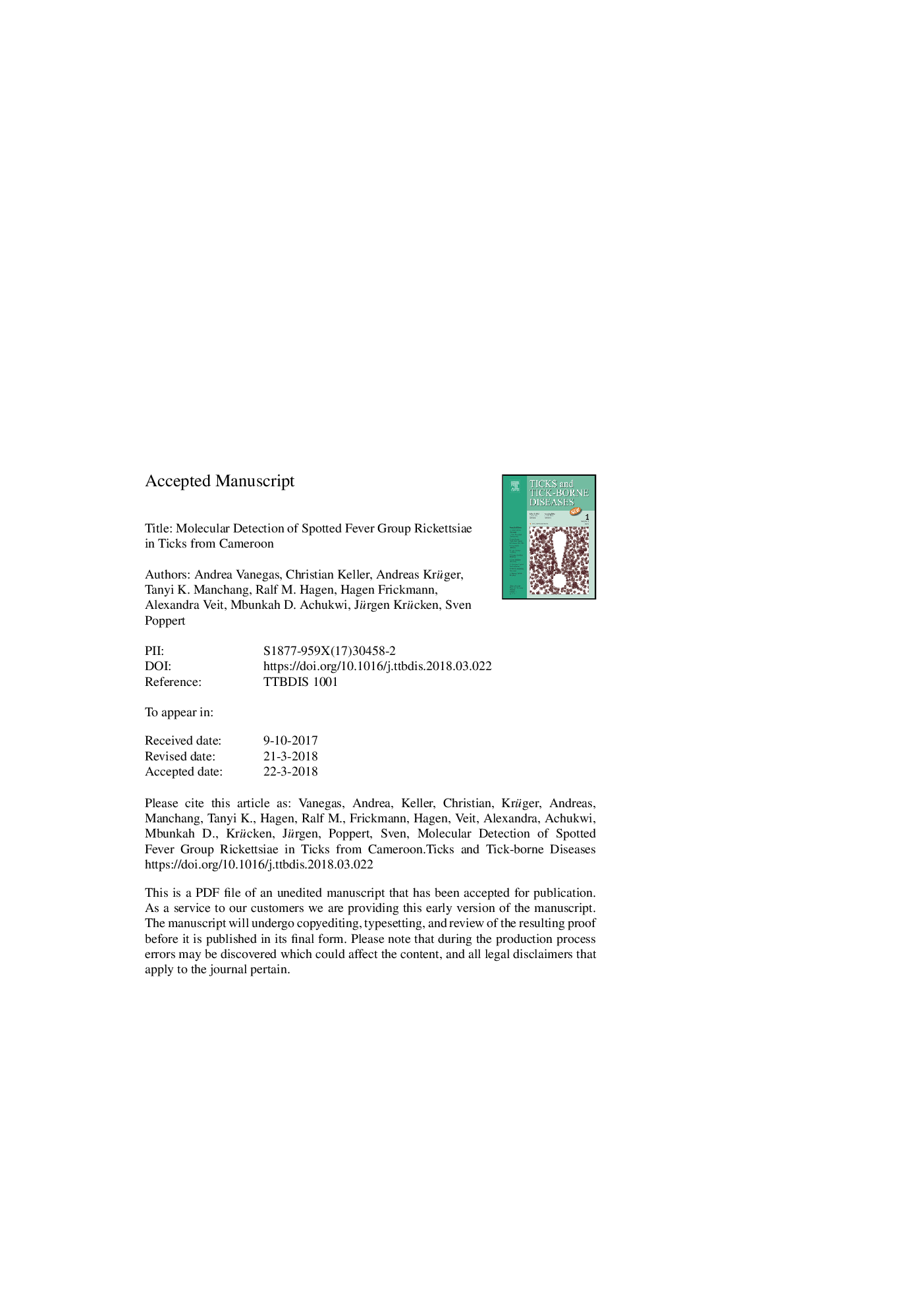| Article ID | Journal | Published Year | Pages | File Type |
|---|---|---|---|---|
| 8507360 | Ticks and Tick-borne Diseases | 2018 | 28 Pages |
Abstract
Of the 316 adult ticks collected, 149 (47.1%) were Amblyomma variegatum, 92 (29%) Rhipicephalus spp. and 75 (23.7%) Hyalomma spp. Through the use of conventional PCR assays for the rickettsial ompB gene, rickettsial DNA was detected in 104 (32.9%) samples (85 Amblyomma sp., 14 Hyalomma spp. and 5 Rhipicephalus spp.). The ompB gene and the three intergenic were sequenced for 10 ticks in order to determine the rickettsial species. Rickettsia africae was detected in Amblyomma variegatum, Rickettsia aeschlimannii in Hyalomma rufipes and Hyalomma truncatum, Rickettsia sibirica in H. truncatum, Rickettsia massiliae in Rhipicephalus lunulatus and Candidatus Rickettsia barbariae in R. lunulatus. To the best of the author's knowledge, this report represents the first molecular evidence of rickettsial infection in ticks in the Adamawa region of northern Cameroon, which suggests a possible exposure of the human population in this region.
Related Topics
Life Sciences
Agricultural and Biological Sciences
Animal Science and Zoology
Authors
Andrea Vanegas, Christian Keller, Andreas Krüger, Tanyi K. Manchang, Ralf M. Hagen, Hagen Frickmann, Alexandra Veit, Mbunkah D. Achukwi, Jürgen Krücken, Sven Poppert,
